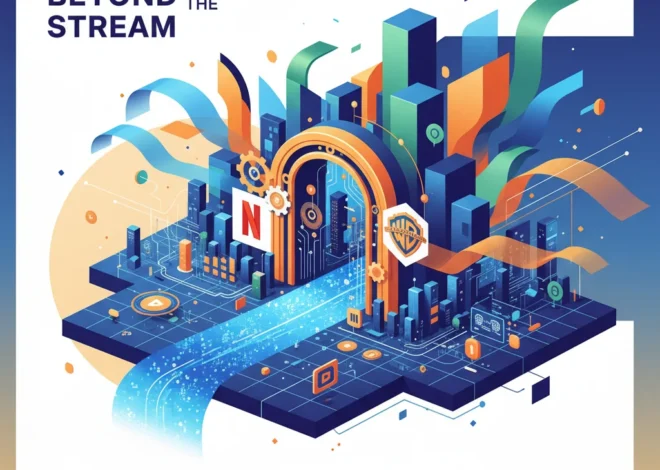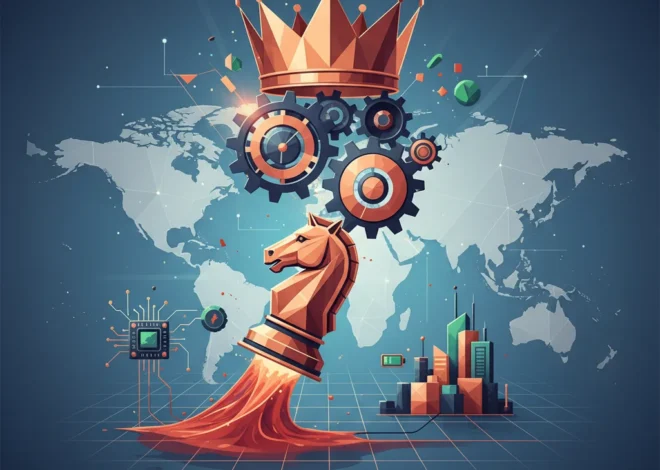
Apple’s $700M Checkered Flag: How AI and Cloud are Fueling the Trillion-Dollar Race for Live Sports
The roar of the engine, the blur of color at 200 mph, the razor-thin margin between victory and defeat—this is the electrifying world of Formula 1. For decades, this spectacle has been delivered to us through traditional broadcast television. But the starting grid is changing. In a move that sends shockwaves through the media and tech industries, Apple is reportedly finalizing a monumental deal to secure the US broadcasting rights for Formula 1, a pact valued at a staggering $700 million annually.
This isn’t just another content acquisition; it’s a declaration of war. It signals that the battle for your subscription dollars has moved from scripted dramas and movies to the last bastion of appointment television: live sports. For developers, entrepreneurs, and tech professionals, this move is more than just a headline—it’s a roadmap to the future of entertainment. It reveals how cutting-edge software, massive cloud infrastructure, and sophisticated artificial intelligence are becoming the new engines of growth, transforming how we consume content and creating a fertile ground for innovation.
Let’s pop the hood on this landmark deal and explore why Apple is betting big on F1, and what it means for the entire tech ecosystem.
The Final Frontier: Why Big Tech is Obsessed with Live Sports
The streaming wars have been a brutal battle of attrition. Netflix, Disney+, HBO Max, and countless others have spent billions creating vast libraries of on-demand content. Yet, they all face the same challenges: subscriber churn and content fatigue. Live sports are the ultimate antidote. They are DVR-proof, intensely communal, and one of the few content types that can command a massive, simultaneous audience.
This “live” factor is why tech giants are willing to write nine and ten-figure checks for broadcasting rights. They aren’t just buying content; they’re buying committed, passionate audiences. Apple is the latest, but certainly not the first, to enter this high-stakes arena. They join a grid of formidable competitors who have already secured their own flagship sporting events.
Here’s a quick look at how the major tech players are positioning themselves in the live sports landscape:
| Tech Giant | Flagship Sports Property | Reported Annual Value | Key Strategic Angle |
|---|---|---|---|
| Apple | Formula 1 (US Rights) | ~$700 Million (proposed) | Global, affluent audience; Perfect showcase for Vision Pro AR/VR. |
| Amazon | NFL Thursday Night Football | ~$1 Billion | Integrating sports into the Prime ecosystem to drive retail and AWS usage. |
| Google (YouTube) | NFL Sunday Ticket | ~$2 Billion | Dominating the premium football market and driving subscriptions for YouTube TV. |
| Apple | Major League Soccer (MLS) | $250 Million | A truly global deal, testing the infrastructure and business model for future bids. |
Formula 1, in particular, is a uniquely strategic asset. Its popularity has exploded in the United States, thanks in large part to the success of the Netflix series “Drive to Survive.” F1 viewership in the U.S. has seen dramatic growth, averaging 1.21 million viewers per race in 2022, a 28% increase from the previous year. This audience is not only growing but is also younger and more tech-savvy than that of many other legacy sports—a perfect fit for the Apple brand.
Order in the Code: How AI is Rewriting the Rules of the Legal World
The Apple Playbook: More Than a Stream, It’s an Ecosystem
For Apple, this deal isn’t just about adding a new tile to the Apple TV+ app. It’s about deepening the integration of its legendary ecosystem. Think about the possibilities:
- The Vision Pro Killer App: Imagine watching the Monaco Grand Prix not on a screen, but from a virtual seat in the grandstands, or even from inside the cockpit. With Apple Vision Pro, fans could have a live telemetry heads-up display, overlaying speed, G-forces, and tire degradation onto their view of the race. This is the kind of immersive experience that sells a $3,500 piece of hardware.
- Hardware Integration: Receive dynamic race alerts on your Apple Watch. Follow your favorite driver’s position on a real-time map on your iPad while the main race plays on your Apple TV. The seamless integration across devices is a core tenet of Apple’s strategy.
- Data and Services: Apple can leverage its other services, like Apple News for race analysis and Apple Music for driver-curated playlists. It’s all about increasing the stickiness of the “walled garden.”
This strategy hinges on world-class software engineering and flawless execution. The pressure will be on Apple’s developers to create a streaming experience that is not only stable and high-quality but also genuinely innovative, setting a new standard for sports broadcasting.
The Tech Under the Hood: AI, Cloud, and Cybersecurity at Scale
Delivering a flawless F1 broadcast to millions of fans simultaneously is a monumental technological feat. This is where the keywords that define our industry—AI, cloud, SaaS, and automation—move from buzzwords to mission-critical components.
The Power of the Cloud and SaaS
At its core, Apple TV+ is a global SaaS (Software as a Service) platform. Streaming an F1 race isn’t like hosting a website; it involves ingesting dozens of video feeds, audio channels, and data streams from the track, encoding them in real-time, and distributing them globally with minimal latency. This entire workflow runs on a massive, distributed cloud infrastructure. This infrastructure must be elastic, capable of scaling up to handle the peak demand of a race start and scaling down afterward to manage costs. Any hiccup, any buffering, can ruin the experience and damage the brand.
The Rise of the AI-Powered Broadcast
This is where things get truly exciting. Artificial intelligence and machine learning are poised to revolutionize the viewing experience:
- Personalized Feeds: Don’t care about the leader who is 30 seconds ahead? An AI could automatically curate a personal feed for you that focuses on the midfield battles, your favorite driver’s on-board camera, or key strategic moves.
- Automated Highlights: Machine learning algorithms can analyze the race in real-time to identify key moments—an overtake, a crash, a brilliant pit stop—and instantly generate highlight clips for social media or for viewers who join late. This is a powerful form of content automation.
- Predictive Analytics: Imagine an on-screen graphic, powered by an ML model, that shows the real-time probability of a pit stop strategy succeeding or predicts tire wear based on historical data and current track conditions. This adds a layer of intellectual engagement for dedicated fans.
- Natural Language Processing: AI could even generate real-time subtitles in multiple languages or provide alternative, data-rich commentary tracks, making the sport more accessible globally.
The Unseen Shield: Cybersecurity
With a high-profile service like this, cybersecurity is not an afterthought; it’s a foundational requirement. Apple will have to defend against a host of threats, from DDoS attacks aimed at taking the stream offline during a critical moment to sophisticated piracy rings trying to illegally rebroadcast the content. Protecting the integrity of the stream and the security of millions of subscribers’ data is a continuous, high-stakes battle that requires immense investment and expertise.
The AI Race Isn't What You Think: China's Two Secret Weapons
The Ripple Effect: What This Means for Startups and Developers
A move of this magnitude by a company like Apple doesn’t happen in a vacuum. It creates waves of opportunity across the tech landscape.
For startups, a new ecosystem will emerge around the “Apple Sports” experience. There will be a demand for companies specializing in:
- AR/VR Content Creation: Building the immersive overlays and virtual environments for the Vision Pro experience.
- Fan Engagement Platforms: Developing second-screen apps, fantasy leagues, and social betting platforms that can integrate with the main broadcast.
- AI-Driven Analytics: Providing deeper, more nuanced data analysis for both the broadcast team and the end-users.
For developers and those skilled in programming, this signals a hot job market. The demand for engineers with expertise in video streaming protocols (HLS, DASH), cloud architecture, AI/ML model deployment, and robust cybersecurity practices will only intensify. This is a validation that media tech is a booming and resilient sector.
From Downing Street to Silicon Valley: Why Big Tech Is Hiring Politicians to Win the AI Race
The Final Lap
Apple’s $700 million bid for Formula 1 is far more than a simple media rights deal. It’s a calculated, strategic convergence of hardware, software, and premium content. It’s a showcase for the power of the modern tech stack, where the cloud provides the foundation, sophisticated software builds the experience, and AI provides the intelligence to make it personal and engaging.
This move is a clear signal that the future of entertainment will not be televised; it will be streamed, personalized, and deeply integrated into the technology that surrounds us. For the tech world, from the largest corporation to the smallest of startups, the message is clear: the race is on. It’s time to start your engines.


